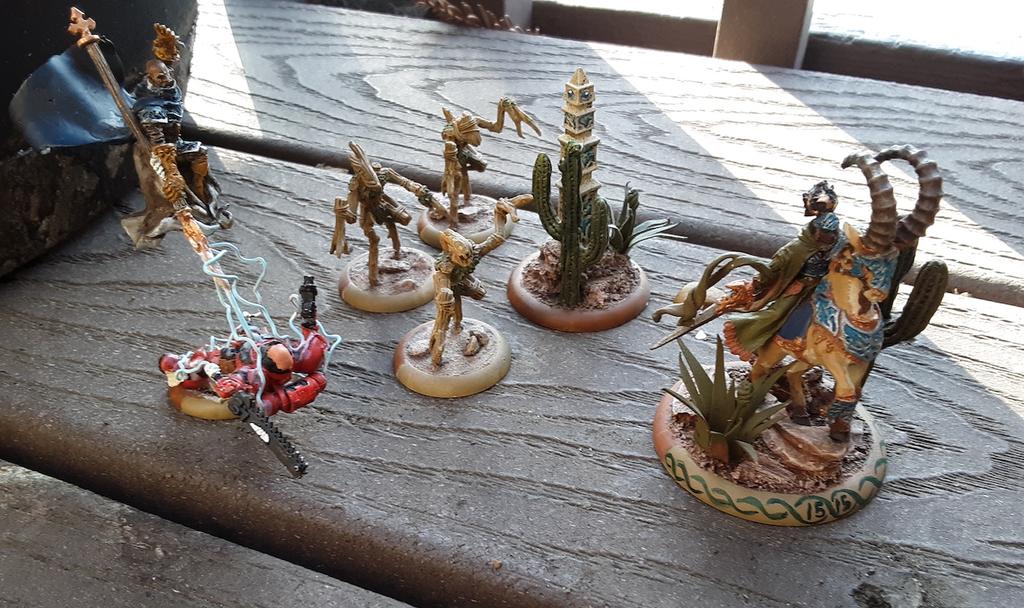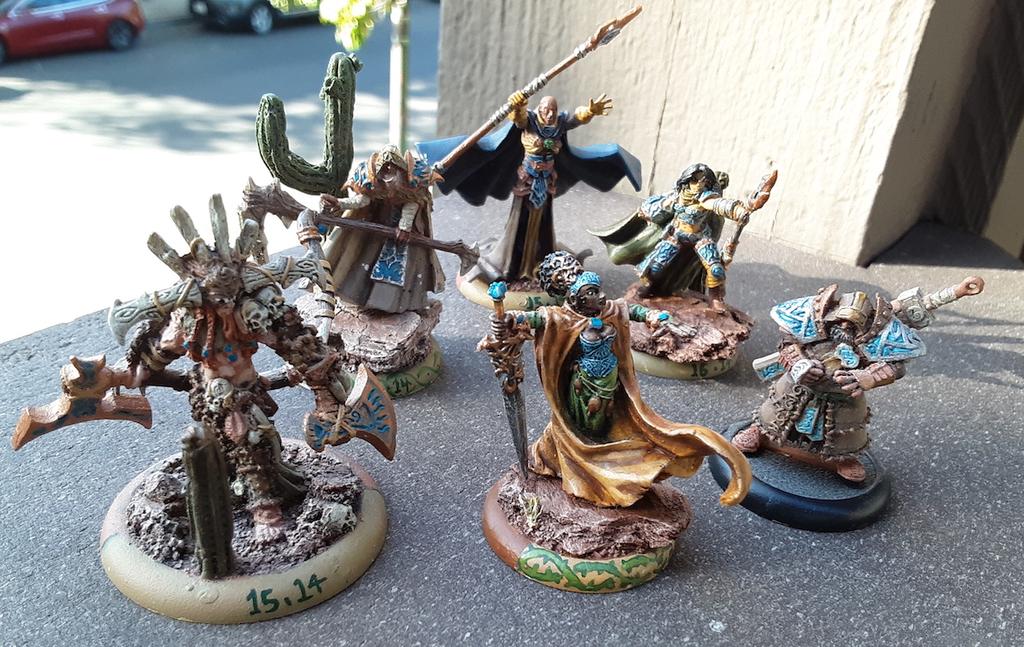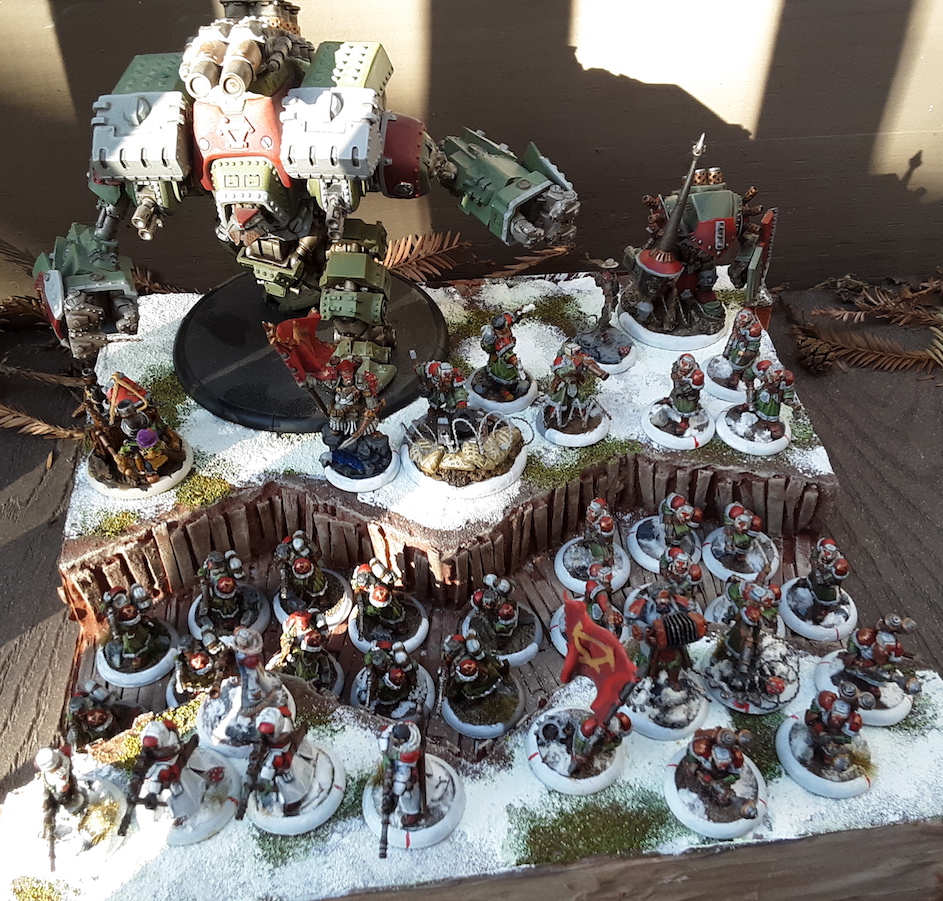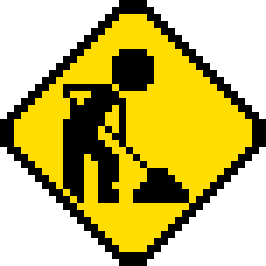I love tabletop minis games, but in 2016 my daughter was born and, having a total lack of free time, I sadly put my paints and minis away in the closet.
In January, I saw a Mastodon friend's Twitch livestream where he was painting some Warhammer models, and we got to talking about paints, and it made me all nostalgic for painting toy soldiers.
So, being inspired and having a bit of free time again, I decided to check out what was new in the world of my favorite "paint scores of little mans and make them fight" tabletop game, Warmahordes. I found out three things:
-
since physical game stores have all been closed to COVID for a year, people play Warmahordes on either Tabletop Simulator, or better yet, a new site called War Table. War Table is much lower barrier-to-entry since it's just a website where you can drag circles around and roll dice, it doesn't involve installing plugins and running a 3d physics engine like Tabletop Simulator does.
-
some gamers (who run a podcast called Line of Sight ) made up a variant called "Brawlmachine".
-
The Line of Sight discord server runs Brawlmachine leagues on War Table, and registration for the February league was open.
So I played a bunch of Brawlmachine with friendly internet strangers in February, and my verdict is:
Brawlmachine fixes almost every single thing I didn't like about Warmahordes and does it with an incredibly simple set of changes.
Amazing job, guys!
In the rest of this post I want to talk about what changes Brawlmachine made to the rules, and why they work. Warning: this is a long and extremely nerdy post, involving a lot of game design and theory stuff. If that sounds interesting, read on, if not, turn back now! I tried to write it in a way that makes sense if you're interested in game design but don't know anything about Warmahordes.
At the end I segue into some musing about player-created formats for competitive games, in general, and why I think they have the potential to be better than the "official" games.
What's different in Brawlmachine?
- everything is FA:1 (you can't have more than one of the same unit, i.e. no spamming multiples of the same thing)
- no huge-sized-base models (colossals and battle engines)
- army size is 25 points (for comparison, current standard tournament size is 75 points)
- to suit the smaller size, they made new scenarios where the scoring zones/flags are a little closer together, so they're easier for a smaller army to control or contest
- there's a very small list of banned characers (they call it the Epic List, as in "this character's power level is just too epic for this size of game" which is a very polite way of saying OP)
- Time limit is 5 rounds or 40 minutes on a player's chess clock, whichever comes first
- you have a 15 point "sideboard" of models you can swap
- each match consists of 2 games, same lists, same scenario
That's it! It's very simple. The rest of it is just the specifics of the scenarios and the banned list.
So what do these changes do to the game and why is it so good?
No Spam Lists
A lot of the, shall we say, "problem lists" when I played 2nd edition were based on spamming light warjacks/beasts or other medium base things with unlimited FA and lots of hit points. Like "Bradigus Woldwatcher spam" (which was a monster back in like 2015 - it took every tournament and had to be emergency nerfed). It seems like PP often failed to playtest the limit case of a FA:U warbeast with a battlegroup-wide buff and a theme force benefit or points discount. Stuff would get released, seem fine or even underpowered at first, fly under the radar for a while, until some enterprising player figured out they could break the game by taking twelve of them with the right force multiplier.
With the Brawlmachine FA:1 rule, lists like this simply can't exist in the first place. It drastically reduces the harm a slightly overpowered model can do, it simplifies the amount of playtesting needed, and it helps keep the ban list small.
But an even better benefit is: I don't want to spam the same model, because I don't want to paint lots of identical copies. I want to paint and play with a wide variety of cool things. In Brawlmachine I'm not at a disadvantage by choosing variety. I don't have to ask "wait, would this list be better if I made it more boring and just spammed the best unit?"
All the second-tier characters can come out and play

Above: Sorry, y'all are too good in Brawlmachine...

...which means the rest of you can see the table again.
With the S-tier mage-masters ruled out, the number of viable builds has exploded, like a prey population whose main predator has been removed. If I wanted to be competitive in mk2 Warmachine I always had to be like: "OK what does my list do against Haley 2 / Gaspy 2 / Krueger 2 / (Insert meta-defining list here)?" "How does my list kill a Colossal?" "What do I do against a Synergy caster with light-jack box spam?"
...which meant that a lot of my favorite characters from a theme/story/model perspective, like the Old Witch of Khador and Karchev the Terrible, sadly had to go collect dust on the shelf.
When I saw the Brawlmachine ban list, first I was like "I can't play Krueger the Stormlord? that's no fun" but after some thought I actually really like that the top characters from my own faction are gone. I always wanted to play Baldur the Stonesoul and Kaya the Moonhunter and Mohsar the Desertwalker but why would I when there's such powerful choices as Krueger the Stormlord and Morvahna the Dawnshadow?
Ironically, forbidding a few choices can drastically increase the choices that are really available. In Brawl I can play Mohsar the Desertwalker now and not feel like I'm handicapping myself.
People are playing all sorts of zany things. Every faction, every mage-master within every faction, even those long considered competitive garbage are getting dusted off and tried out in Brawlmachine, because who knows: They might be good! Anything might be good! Nobody knows what's good! The format changes require re-evaluating the utility of every piece.
It might be just that the format hasn't been played enough to be "solved" yet, but from the games and discussion I've been in it sure feels like a ton of different builds and tactics are viable. I'd be very surprised if it turned out to be easily "solvable" or have a single best build.
The Scenarios Are Extremely Winnable
Prior to Brawlmachine I played a lot of Warmahordes games where the scenario was basically an afterthought -- both players would contest enough flags or whatever to avoid losing on scenario, while focus on getting ahead in the attrition fight, then closing out the game by either assassination (winning by killing the enemy leader) or killing enough of the enemy army that the scenario win was then trivial. Basically the scenario was always a stalemate until the attrition game was decided.
In Brawlmachine the scenarios don't stalemate. I've lost a lot of games to scenario points when I thought I was doing great for being up on attrition, but the opponent surprised me with a clever play, grabbing a flag by sneak attack or blocking my guys out of a zone.
You have to weigh the pros and cons of attrition vs. scenario -- sometimes it's worth it to sacrifice a valuable model to get a scenario point. Sometimes moving an enemy model out of a scoring zone is more important than killing it. Which means models that can move enemy models become a lot more valuable. So do stealthy and/or ambushing and/or terrain-ignoring commando models who can sneak onto a flag deep in enemy territory.
Positioning, blocking, and playing to the terrain and board layout are more important than just maximum attack power, and I think that's great. It makes the game way more multi-dimensional.
Smaller-Point Games Are Better

Above: a 75-point Khador Winter Guard list...

... and the same list pared down to 25 points
75-point games were just too much. They take, like, at least three hours to play. When I used to go to my local game store and play Warmahordes I often had to leave games unfinished because the game store was closing and we had to just pack our stuff up and put the terrain away. That sucked!
This is why Warmahordes at a serious level is always played on chess clocks -- you can't let players stand around thinking about their turn all day. (This game has so many possible options and plans and contingencies that you can get analysis paralysis real bad.)
There's a more subtle reason that smaller point games are better, though.
Warmahordes is an "I go with my whole army, then you go with your whole army" system. That's my least favorite aspect. It used to be this was the only way to design a tabletop minis game, but there's been a lot of innovation in this area in newer games -- either you take turns activating one model at a time, or models can react to each other during either turn, or something. Warmahordes is kind of showing its age, design-wise, in sticking to "I-go-U-go".
The thing that's not fun about "I-go-U-go" is that my opponent gets to do a bunch of stuff without me able to interact or respond -- I'm a passive spectator until it's my turn again. This is boring, for one thing. And the longer the turns are, the worse it is. Furthermore, if I've made an error during my turn, left an opening or put units in a bad position or whatever, my opponent gets to spend his entire turn punishing me with his entire army before I get any chance to correct things. In that time they might kill a ton of my dudes, leaving me with fewer options left to play when it does get back to me. This causes any small advantage to tend to snowball rapidly.
The bigger the army sizes, the worse all these problems get. In 75-point games a single turn might be 20 minutes -- enough time for me to completely check out, go to the bathroom, get a drink, check my phone, then I come back and my opponent is still making up his mind. Or, his army goes on a rampage and takes half of my models off the table before I got a chance to use them.
(How 75-point games often felt is that I lost due to a mistake on turn 1, but it took two and a half hours to find out that I had lost due to a mistake on turn 1.)
The smaller the army sizes, the closer "I-go-U-go" approximates alternating activations. The downtime is shorter, the amount of stuff that can be killed before a chance to retaliate is less, and when you have fewer models activating for a greater number of turns they each get to do more things and there's generally more interactivity, responsiveness, give-and-take, and all the other things that make wargames fun.
One Brawlmachine game is short enough that it's practical (and standard) to immediately play a rematch: same opponent, same lists, same scenario, same board. And rematches are great, because instead of "it took me two and a half hours to find out that I had lost due to a mistake on turn 1 and now the game store is closing", it's "Let's play again and this time I won't make that mistake on turn 1 and we'll see what happens". I learn faster and get better at the game faster because I get to play more games.
I didn't get into Warmachine to play giant mass battles, anyway! A big part of the appeal is how it was pitched as a relatively low-model-count skirmish game, where every single model has lots of meaningful options and they combo with each other in interesting ways. You don't have to buy (or paint) a giant boatload of models to get into the game -- a list might just be 10-15 models.
And that is what it's like at small point values. But over the time that I played (2011-2016), it pushed to larger and larger point values, because people in the local gaming group had more and more models and they wanted to be able to play with all of their cool toys at the same time. And that leads to huge games, with rows and rows of identical infantry instead of unique characters and monsters, and because turns take so long you're playing fewer turns in the same amount of time, so playing with more toys in a sense means playing less game.
Why did we play bigger, less fun games for so long?
Following that desire to play with all your cool toys at the same time, led us to a place where the game was actually less fun for everybody.
We could have started playing smaller points at any time -- but we didn't. It's a classic Collective Action Problem. Noone wants to be the first, etc. Trying to say "hey let's try using smaller lists and weaker casters" is an uphill battle.
Wargames aren' t like RPGs where you're always playing with the same group and developing your own unique house rules micro-culture. Wargames are more like Magic: the Gathering where you wanna be able to show up at game night at the game store and play against whoever, which means you need to bring things that are roughtly compatible. Which means you have to coordinate without communicating, which means everybody needs a Schelling Point. And tournament rules tend to be the strongest Schelling Point available. Even if I'm never planning to play in a tournament, the fact that i'm likely to encounter players who are, means I've got a strong incentive to stick to tournament rules, which is why even casual Magic: the Gathering play gravitates to tournament deckbuilding rules.
To counterbalance this, somebody needs to stake out an alternate Schelling point. Plant a flag, grab a bullhorn, yell "hey gamers, try playing over here!"
The fact that the Line of Sight crew playtested their format, made a clear PDF of the rules, gave it a catchy name, and promoted the hell out of it, made all the difference, because it's now an alternate Schelling point to find pick-up games at.
Why a game company can't do the things a player-created format can
Who has a financial incentive to push players to do bigger-point games? Well, the company that sells us the models, of course. Which is, unfortunately, also the company that is writing the rules and balancing the stats. Not to get too conspiratorial here -- I can't actually blame them too much for trying to keep their game company in business, so they can keep having jobs, and given the total addressible market size for this type of game is not huge, how do you keep up an income stream after all your players have made their initial investment?
The crude version of this is Power Creep: the classic problem in competitive games from Magic: the Gathering to Warhammer 40k, where the company keeps releasing new stuff that's more powerful than the old stuff so if you want to stay competitive, you have to keep buying the new stuff.
PP has mostly avoided doing this too egregiously; I think they really do try to avoid power creep, but getting back into the game after some time away I hear a lot of worrying stuff about Infernals, their demon-summoning mechanic, a multi-faction team-up list called Strange Bedfellows, a zillion types of Archon models, and some guy called The Hermit who seems to be in every list. That's all got more than a whiff of power creep about it.
The more subtle version is, instead of overt power creep, the company keeps the game reasonably well balanced but pushes the point level at which it is balanced to be higher and higher. Releasing cool stuff that can only be used in high-point games (like Colossals, which are very expensive both in points and in dollars).
There's also a subtle variant where there's a lot of metagame churn that's constantly making some choices better and other choices worse. That unit which was great last year (and which I put all my time into painting) now has everybody teching against it, so it sucks in the metagame now, and you need to buy this other unit... some amount of turnover is good because it prevents the metagame from getting stale, but games whose balance is too "paper/rock/scissors"-y, such that choices counter to the meta get completely invalidated -- seem to lead to where every player must buy their own paper AND their own rock AND their own scissors, see?
Here's my takeaway: you can't leave the task of balancing this type of game entirely to the company that sells it. They have an inherent conflict-of-interest.
(Imagine being the guy at the game company who says "hey let's encourage a play format that leads gamers to buy less of our product". No matter how much better the format is, you're directly attacking your coworkers' job security.)
To bring another game into this -- Star Wars X-Wing minis -- I remember a thread in the X-Wing forums. It was worrying about how long the game could last, now that every faction had all their main ships from the movies and the game was well-balanced. Surely, that all sounds like a good place for the game to be, right? But the forum poster was worried that there wouldn't be incentive for anyone to keep buying more new plastic spaceships, therefore the game would become unprofitable and the company would stop supporting it, and it would cease to exist.
Think about that. "We're having too much fun with our current plastic spaceships, therefore nobody is buying new plastic spaceships, therefore they'll stop making new plastic spaceships, therefore we'll have to stop playing with our current plastic spaceships that are too fun"
You can joke about people who are so brainwashed into consumer culture that they go "please financially exploit me harder, corporation-daddy!" but there's a real concern here. Could X-wing stay alive without Fantasy Flight / Atomic Mass Games making new models? Obviously I can take an old game that's on my shelf, from a defunct company, and teach it to somebody, and play it. But we mean something else when we talk about a game being "alive", and that's being able to find opponents who have their own collections and shared understanding of the rules.
The customizability and opponent-findability of these games is what makes them fun, but can they keep existing without the consumeristic business model? Can they destroy themselves by being too well-balanced? Can a game keep going after the company that created it goes out of business? Can a game exist - as a player base, as a culture, as an evolving rule-set - without a company "owning" it? Well sure, of course they can! No company "owns" Chess or Go or Poker, and those have been around for ages; they're just part of human culture.
I read a fascinating article once arguing that Magic: the Gathering would be better if Wizards of the Coast didn't have a monopoly on designing sets and formats. WotC's business model requires them to require us to buy new decks every couple of months in order to keep playing, and this makes it worse as a game. The way to correct this, as far as I can see, is player-created formats like Cube Draft. And once you're doing that, why do the cards have to be "real" Magic: the Gathering cards, which after all are just cardboard with drawings of goblins on them? Why not just... print whatever ones you want, cut them out, and put them in sleeves?
And if 3-d printing keeps getting better, soon "print whatever ones you want" will apply to miniatures games, too.
As players, what we'd really want, ideally, is a well-balanced game that we can buy once and then keep enjoying for years and years, but with the customizability and creativity aspect of a CCG or a miniatures wargame. With lots of variety but without power creep, with opponents easy to find, where we could paint new stuff if we wanted to but aren't forced to constantly buy, buy, buy just to keep playing.
I don't think the financial incentives line up for a single-company-owned game to give us that. Maybe for short periods of time but not long-term. Long-term maybe it takes a community to do that.

